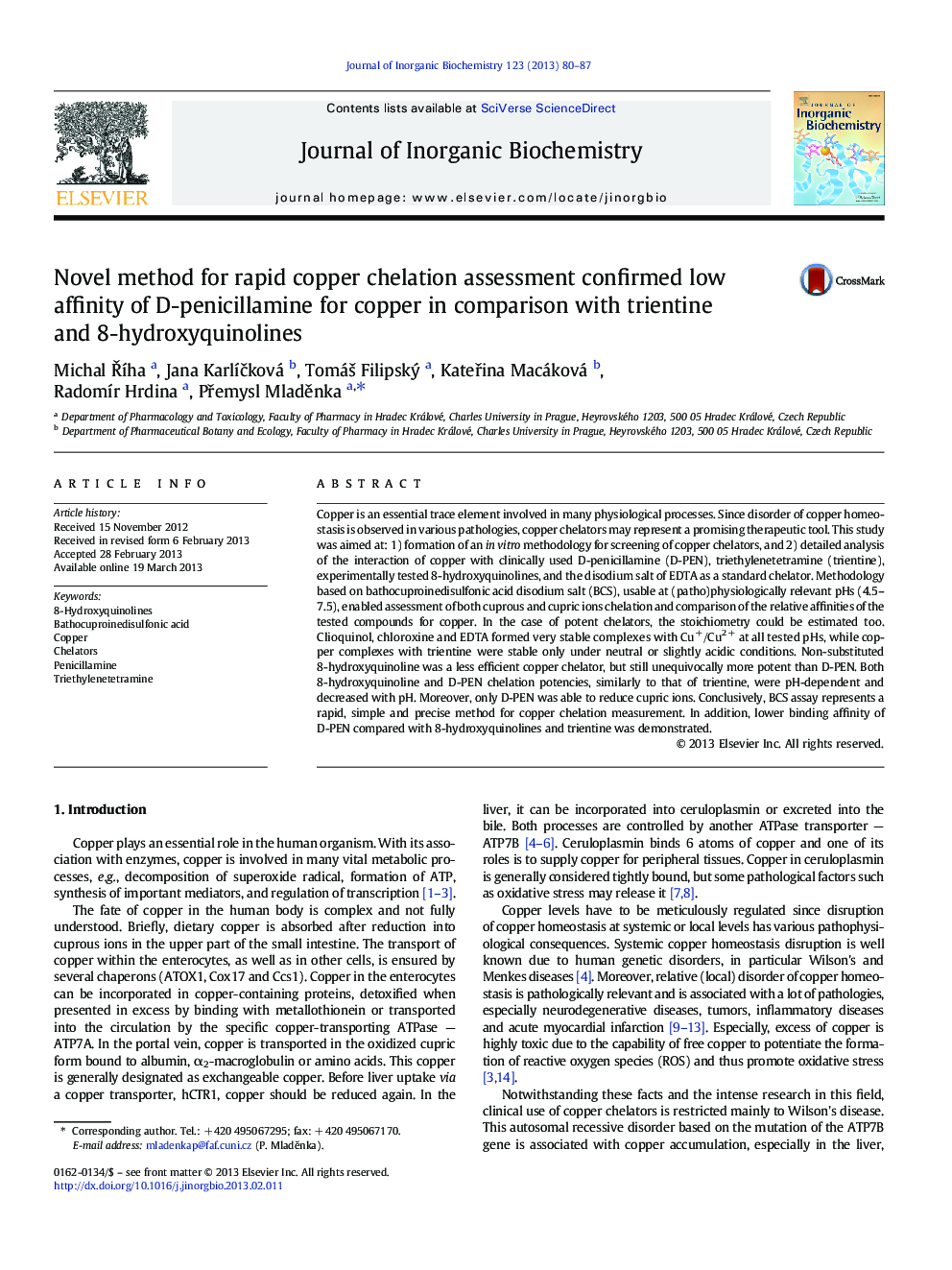| کد مقاله | کد نشریه | سال انتشار | مقاله انگلیسی | نسخه تمام متن |
|---|---|---|---|---|
| 1317625 | 1499464 | 2013 | 8 صفحه PDF | دانلود رایگان |

• Cu chelation assessment by bathocuproinedisulphonic acid disodium salt.
• Clioquinol and chloroxine were more potent than 8-hydroxyquinoline.
• Trientine was less potent than clioquinol and chloroxine in acidic conditions.
• Trientine was markedly more efficient chelator than D-penicillamine.
• D-penicillamine reduced Cu2 + in contrast to other tested compounds.
Copper is an essential trace element involved in many physiological processes. Since disorder of copper homeostasis is observed in various pathologies, copper chelators may represent a promising therapeutic tool. This study was aimed at: 1) formation of an in vitro methodology for screening of copper chelators, and 2) detailed analysis of the interaction of copper with clinically used D-penicillamine (D-PEN), triethylenetetramine (trientine), experimentally tested 8-hydroxyquinolines, and the disodium salt of EDTA as a standard chelator. Methodology based on bathocuproinedisulfonic acid disodium salt (BCS), usable at (patho)physiologically relevant pHs (4.5–7.5), enabled assessment of both cuprous and cupric ions chelation and comparison of the relative affinities of the tested compounds for copper. In the case of potent chelators, the stoichiometry could be estimated too. Clioquinol, chloroxine and EDTA formed very stable complexes with Cu+/Cu2 + at all tested pHs, while copper complexes with trientine were stable only under neutral or slightly acidic conditions. Non-substituted 8-hydroxyquinoline was a less efficient copper chelator, but still unequivocally more potent than D-PEN. Both 8-hydroxyquinoline and D-PEN chelation potencies, similarly to that of trientine, were pH-dependent and decreased with pH. Moreover, only D-PEN was able to reduce cupric ions. Conclusively, BCS assay represents a rapid, simple and precise method for copper chelation measurement. In addition, lower binding affinity of D-PEN compared with 8-hydroxyquinolines and trientine was demonstrated.
Bathocuproinedisulfonic acid disodium salt was used for Cu-chelation assessment. The substituted 8-hydroxyquinolines (e.g. clioquinol) were more active than trientine (triethylenetetramine) under acidic conditions and much more potent than D-penicillamine in all conditions.Figure optionsDownload as PowerPoint slide
Journal: Journal of Inorganic Biochemistry - Volume 123, June 2013, Pages 80–87